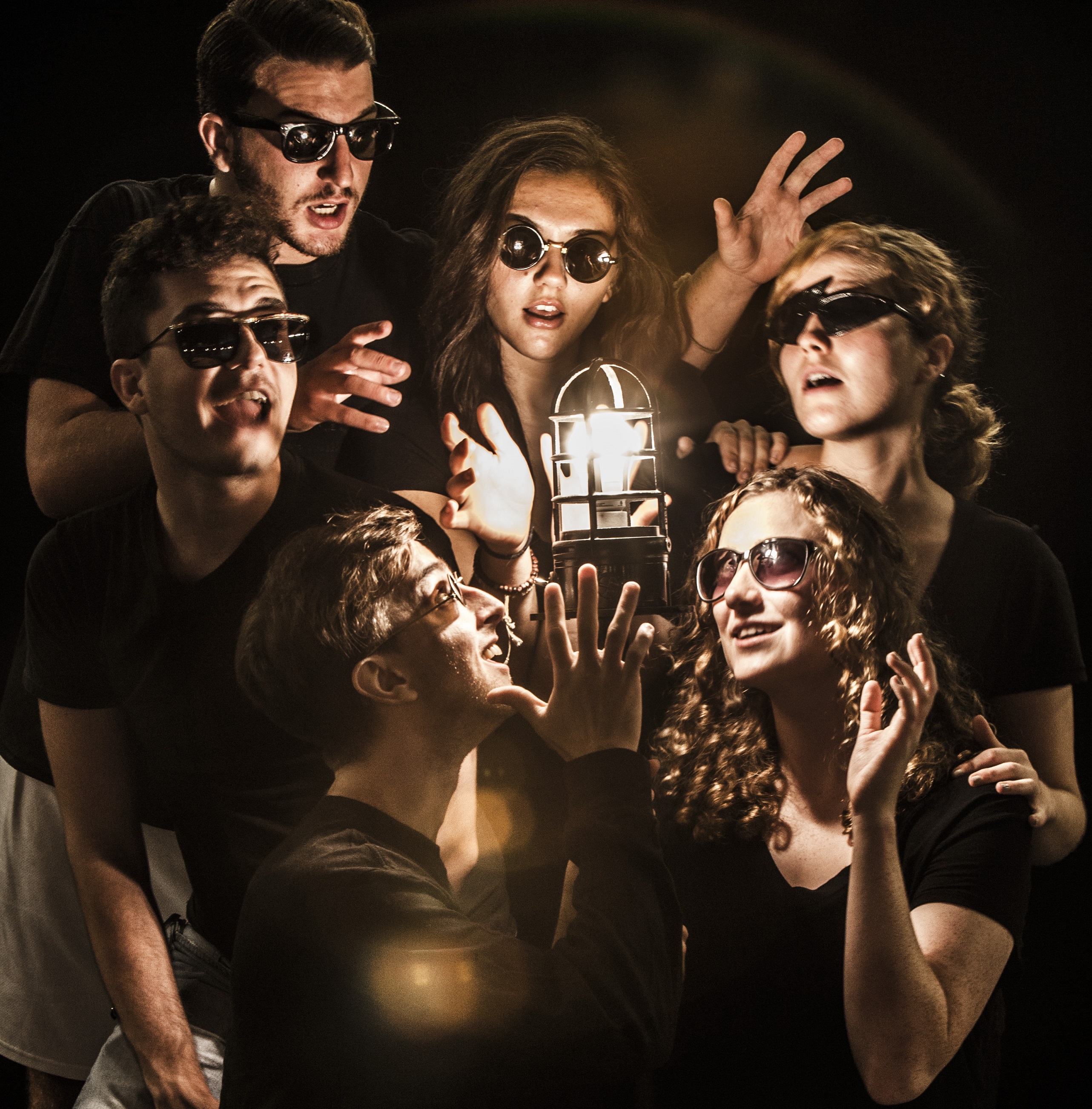During the fall semester of 2015, students and faculty alike flooded the Vukovich theatre for (Ghost)Light, an original performance piece developed over the course of two years, supported in part by the Andrew W. Mellon Collaborative Undergraduate Research in the Humanities grant. Though the construction of such pieces may not immediately be thought of as “research,” the development of (Ghost)Light required intensive faculty-student collaborative scholarship and creative work. Originally conceived by Professor Beth Watkins from the Communication Arts and Theatre department, (Ghost)Light took shape through interdisciplinary considerations of research from both the sciences and the arts. Student collaborators helped to analyze scientific literature on electricity and then transformed the knowledge extracted from that research into creative representations and expressions through choreography, puppetry, and more. (Ghost)Light explored the conception of electricity and its role in human history, highlighting notable figures like Marie and Pierre Curie, Nikola Tesla and Thomas Edison. Watkins described the process of devising the theatre piece in her Director’s Note, sharing that “combining historical research and movement-based theatre techniques with storytelling–has fostered our sense of creative invention and shared ownership.”
As Stephanie Engel ‘16, one of the research assistants on the project explains, (Ghost)Light was a unique performance piece in that it told a story about science, and history of light in particular, by “conveying scientific information through a creative lens.” (Ghost)Light is one among many projects in the past few years at Allegheny College that have helped to redefine how we perceive and imagine academic research with students. Engel emphasized the importance of this new way of thinking when she describes “the rabbit hole effect.” In other words, Engel notes that, “The more you investigate, the more likely you will get pulled into other branches of study that are outside of what you intended to research. It can lead to discovering more insightful information about your topic…”
Students participating on the project also shared how their experience helped them rethink what research involves. “I would talk to my friends conducting research on salamanders over at Carr Hall during the summer, and we were over in the Vukovich contorting our bodies and telling stories,” Joe Bruch ‘17 shared, “Completely different work, but still recognized as academic research. This is what I think really makes Allegheny such a great place to learn.” The development of (Ghost)Light emphasizes that research isn’t limited to the sciences, but can be applied to any creative endeavor and can combine various academic disciplines in pursuit of the same goal.
The Andrew W. Mellon Collaborative Undergraduate Research in the Humanities is in its last year of funding at Allegheny. So far, 47 faculty-student projects have been supported across departments such as English, Communication Arts, Art, Classical and Modern Languages, and Philosophy.
–story by Natasha Torrence
–photo by Bill Owen
